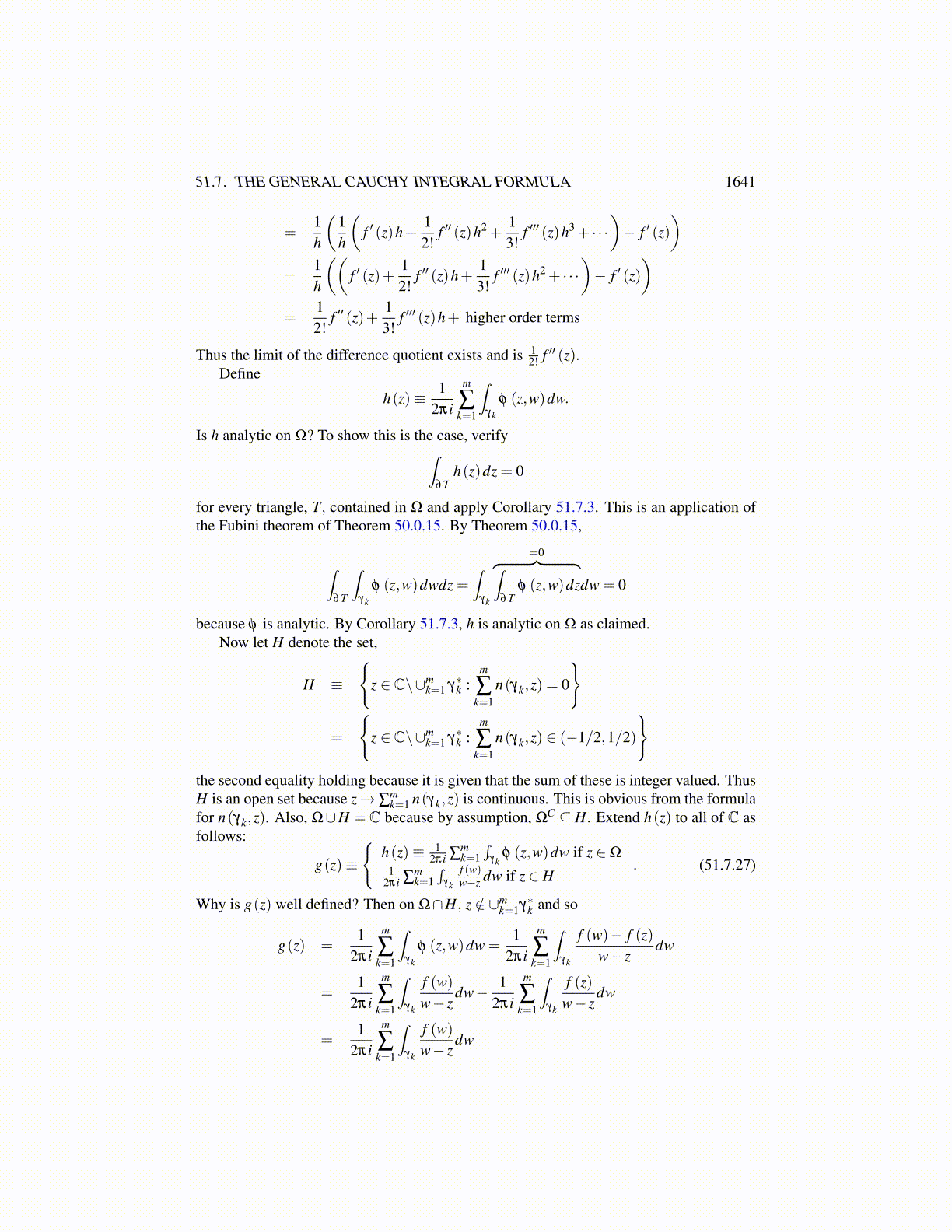
51.7. THE GENERAL CAUCHY INTEGRAL FORMULA 1641
It is a good idea to consider a simple case to get an idea of what the winding number ismeasuring. To do so, consider γ : [a,b]→ C such that γ is continuous, closed and boundedvariation. Suppose also that γ is one to one on (a,b) . Such a curve is called a simpleclosed curve. It can be shown that such a simple closed curve divides the plane into exactlytwo components, an “inside” bounded component and an “outside” unbounded component.This is called the Jordan Curve theorem. This is a difficult theorem which requires somevery hard topology such as homology theory or degree theory. It won’t be used here beyondmaking reference to it. For now, it suffices to simply assume that γ is such that this resultholds. This will usually be obvious anyway. Also suppose that it is possible to changethe parameter to be in [0,2π] , in such a way that γ (t)+λ
(z+ reit − γ (t)
)− z ̸= 0 for all
t ∈ [0,2π] and λ ∈ [0,1] . (As t goes from 0 to 2π the point γ (t) traces the curve γ ([0,2π])in the counter clockwise direction.) Suppose z ∈ D, the inside of the simple closed curveand consider the curve δ (t) = z+ reit for t ∈ [0,2π] where r is chosen small enough thatB(z,r)⊆ D. Then it happens that n(δ ,z) = n(γ,z) .
Proposition 51.7.17 Under the above conditions,
n(δ ,z) = n(γ,z)
and n(δ ,z) = 1.
Proof: By changing the parameter, assume that [a,b] = [0,2π] . From Theorem 51.7.15it suffices to assume also that γ is C1. Define hλ (t) ≡ γ (t)+ λ
(z+ reit − γ (t)
)for λ ∈
[0,1] . (This function is called a homotopy of the curves γ and δ .) Note that for each λ ∈[0,1] , t→ hλ (t) is a closed C1 curve. Also,
12πi
∫hλ
1w− z
dw =1
2πi
∫ 2π
0
γ ′ (t)+λ(rieit − γ ′ (t)
)γ (t)+λ (z+ reit − γ (t))− z
dt.
This number is an integer and it is routine to verify that it is a continuous function of λ .When λ = 0 it equals n(γ,z) and when λ = 1 it equals n(δ ,z). Therefore, n(δ ,z)= n(γ,z) .It only remains to compute n(δ ,z) .
n(δ ,z) =1
2πi
∫ 2π
0
rieit
reit dt = 1.
This proves the proposition.Now if γ was not one to one but caused the point, γ (t) to travel around γ∗ twice,
you could modify the above argument to have the parameter interval, [0,4π] and still findn(δ ,z) = n(γ,z) only this time, n(δ ,z) = 2. Thus the winding number is just what its namesuggests. It measures the number of times the curve winds around the point. One mightask why bother with the winding number if this is all it does. The reason is that the notionof counting the number of times a curve winds around a point is rather vague. The windingnumber is precise. It is also the natural thing to consider in the general Cauchy integralformula presented below. Consider a situation typified by the following picture in which Ω
is the open set between the dotted curves and γ j are closed rectifiable curves in Ω.